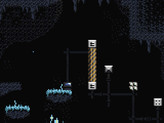

Overall, summer blooms are more sensitive to changes in the environment than spring blooms, being therefore more vulnerable to changes generated by climate change in the Baltic Sea. Additionally, a higher energy gain by the ocean led to longer summer blooms of greater abundance and higher biomass maxima. Warmer periods caused spring blooms to peak earlier, while summer blooms reached higher abundance. There is strong evidence that warmer periods favor both blooms, but in different ways. The results showed that the summer bloom occurs 9 days earlier and last 15 days longer over the 30-year simulation period, but changes in the phenology of the spring bloom were not statistically significant. The summer bloom started on day 158 ± 5, had its maximum biomass on day 194 ± 9 and ended after day 237 ± 8. On average, the spring bloom started on day 85 ± 7, reached its maximum biomass on day 115 ± 6 and declined after day 144 ± 5. The one-dimensional NPZD model simulates the development of both blooms in the water column with realistic atmospheric forcing and initial conditions representative of the eastern Baltic Sea between 19. We study the inter-annual variability and phenology of spring and summer blooms in the eastern Baltic Sea using a physical-biological model.

However, few studies have been carried out on this subject, mainly due to the lack of long-term in situ observations. Department of Marine Chemistry, Leibniz Institute for Baltic Sea Research Warnemünde, Rostock, GermanyĬhanges in environmental conditions may have an effect on the occurrence and intensity of phytoplankton blooms.Oscar Dario Beltran-Perez * and Joanna J.


 0 kommentar(er)
0 kommentar(er)
